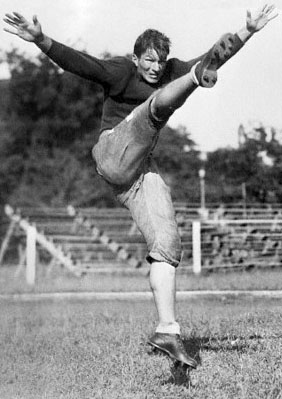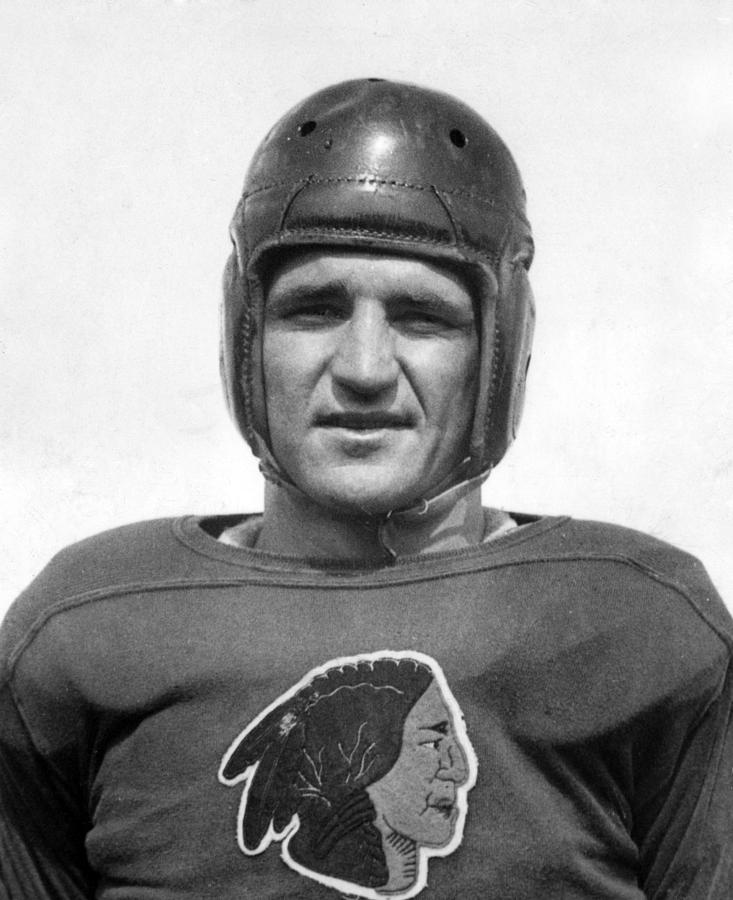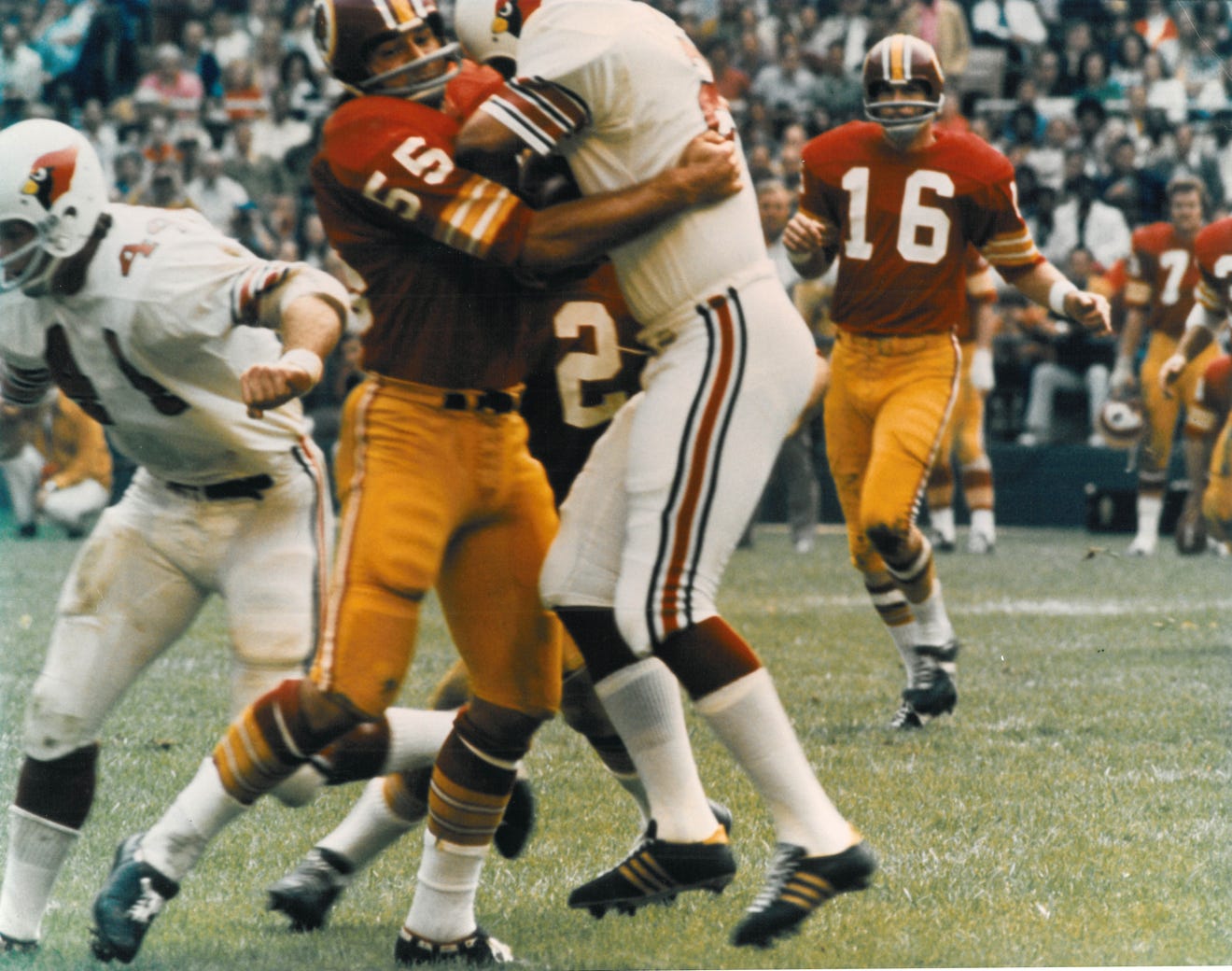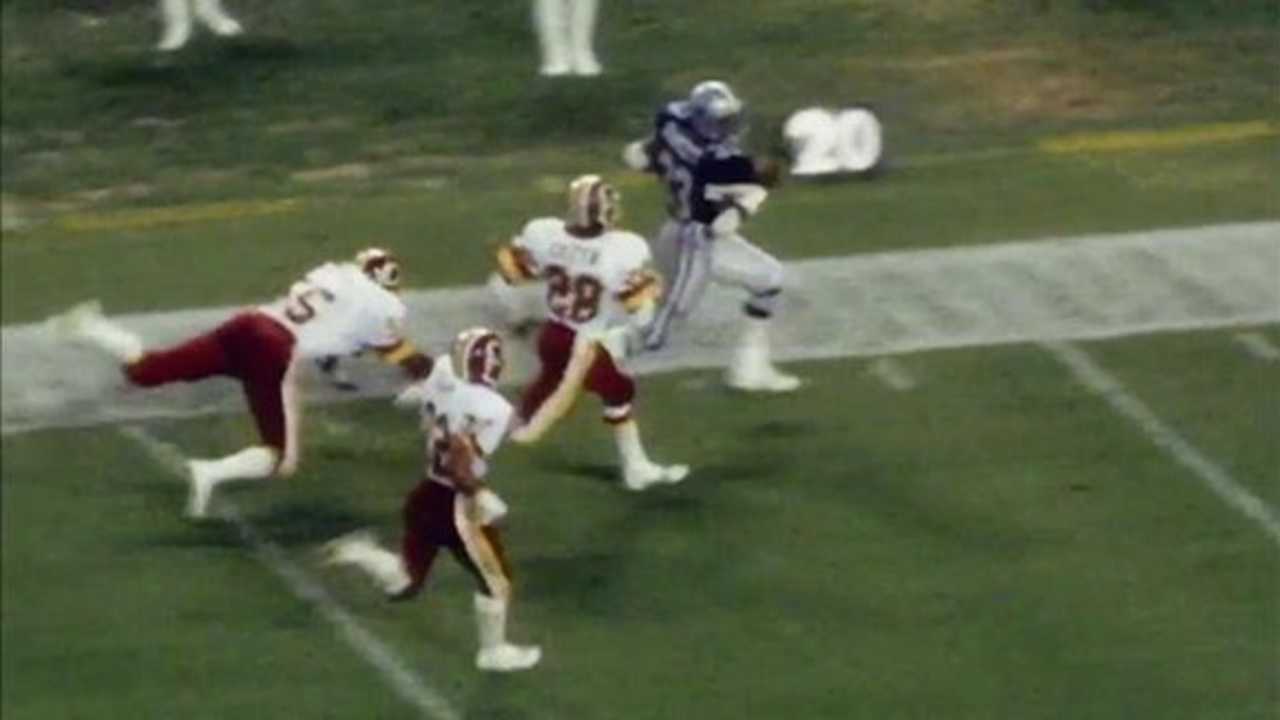Burgundy & Gold Chronicles: This Time in Redskins Draft History
April 27, 2023
by David Earl
Peering Down Memory Lane
Let’s have a little fun here and jump in the Delorean (if you know, you know) to make a few stops back in time, starting with Washington’s inaugural 1936 NFL draft. It goes without saying there have been Hall of Fame greats selected, draft day deals that ultimately didn’t come to fruition and some downright busts. As we all get ready for one of the best times of the year I won’t waste any more of your time, so here we go!
First Ever Drafted Washington Redskin

Riley Smith, a blocking back, was drafted second overall in a draft that saw the top overall pick, Jay Berwanger, never play a down due to a salary dispute, as well as four Hall of Fame inductees. Riley Smith had a short 3-year career in which he averaged 1.9 yards per carry, a total of 18 receptions, and a quarterback rating of 57.3 while passing for 3 touchdowns and 290 yards total. Needless to say, he was the first-ever draft pick by the Redskins and fittingly so was a bust as the number 2 overall pick.
Slinging Sammy Bauch: 1937 Draft

As the number 6th pick in the 1937 draft, Sammy Baugh was one of only two Hall of Fame players inducted from this draft class. He became not only one of the all-time great Redskins but is considered one of the greatest players in the NFL’s first 50 years. This 4-time First Team All-Pro compiled over 21,000 yards passing, 187 touchdown passes, and a career 72.2 quarterback rating while also collecting 31 interceptions as a safety for the team. Winning championships during the 1937 and 1942 seasons, Sammy would finish as probably the greatest draft pick made by the Washington Redskins.
Richie Lucas Lost to the AFL: 1960 Draft

With the 4th overall pick in the 1960 draft, Washington took Penn State star Richie Lucas, who never played a down for them, as he was also first-ever draftee of the AFL’s Buffalo Bills. He only lasted 2 years in the league before being called into military service. Lucas was a mobile quarterback who was being worked into a 2-way player, a similar role to Sammy Baugh, for Buffalo, and was truly becoming comfortable in that role. After his short military stint, the Denver Broncos brought Lucas in through the AFL’s 1962 equalization draft, but he was released shortly afterward and officially ending his NFL career. When seeing his pedigree at Penn State and the role he was maturing into with Buffalo, this might be one of the bigger “What Ifs” in Redskins history as his presence and development could have changed some of the misfortunes throughout the 60s.
Ultimate Return On Investment: Chris Hanburger 1965 Draft

Let’s put the selection of Chris Hanburger into some perspective, as the 1965 NFL draft produced 5 Hall of Fame players with Chris obviously being one. The first four selected future Hall of Famers were selected in rounds 1-3 with Fred Bilentnikoff the last in round 3, pick number 39 overall. The draft would see another 206 players selected before the last future Hall of Famer was selected by Washington in round 18, pick number 245 overall. This 3-time All-Pro linebacker was selected for a total of 9 Pro Bowls, played for Vince Lombardi and was a vital member of George Allen‘s Over The Hill Gang. Washington truly got their biggest bang for their buck ever in the 1965 draft.
George Allen Not Once But Twice: 1973 Infamous Draft Trades

A non-too-happy Pete Rozelle fined George Allen and the Washington Redskins $5,000 and future draft picks for trading away the same draft picks twice. It’s unsure if Allen tried to exploit the system in place but he initially traded a second-round pick to the New York Jets for defensive end Verlon Biggs then shortly made a deal for future Redskins great Richie Petitbon. However, Buffalo and San Diego fell victim too. George sent his 3rd and 4th round picks for another defensive end in Ron McDole to then shortly acquire cornerback Speedy Duncan from the San Diego Chargers. So that’s four players for the 2nd, 3rd, and 4th round picks, with the only problem being that he dealt the exact same picks twice.
Golden Era Nucleus Formed: 1981 Draft

The late great general manager of the Washington Redskins Bobby Beathard worked a draft that would shape the next 10 years of Redskins football. This draft saw the beginning formation of the interior of the Hogs drafting guards Mark May and future Hall of Famer Russ Grimm. The 8th round saw a vertical threat, big play Charlie Brown, added on offense a year removed from drafting future Hall of Famer Art Monk. The addition of Brown helped open up the field for the eventual dominant run game led by “The Diesel” John Riggins. Defensively, Bobby added two integral parts of their defense in premier edge rusher Dexter Manley and steady, hard-nosed linebacker Darryl Grant. This is arguably the draft that set the stage for a decade-long dominance that included 4 Super Bowl runs, resulting in three Lombardi Trophies under Beathard and head coach Joe Gibbs.
NFL’s Fastest Man Selected: 1983 Draft
This iconic screenshot above shows the greatest Redskin player and draft pick of all time (in my unwavering personal opinion) chasing down one of the fastest men in the NFL, Tony Dorsett. This 5’9″ corner out of Texas A&M-Kingsville was drafted 28th overall and quickly became an impact player for the Redskins defense. Elected to the Hall of Fame in 2008, Green was a true lockdown corner who finished his career with 54 interceptions and was a key cog during Washington’s run to two more Super Bowl victories. From his iconic leap over a Chicago Bears defender Cap Boso for a 48-yard punt return for a touchdown in the playoffs to hauling in a game-ending interception against the Minnesota Vikings the following week in the NFC Championship game, Green was absolutely clutch in the 1987 Super Bowl run. Adding Darrell Green to a defense with such a dominant defensive front ended up being the final piece that solidified a championship-caliber defense.
The 80s Not Perfect Either
Washington traded Joe Washington and their first-round pick in 1986 to Atlanta in the 1985 draft in exchange for their second-round pick and select defensive back Tory Nixon. Nixon never played a down for Washington as Joe Gibbs found his attitude unworkable and his preseason was less than spectacular; therefore, Washington traded him to the 49ers for a 1986 6th-round pick before the season even started. While only having a 3-year career in San Francisco, Nixon was undoubtedly the worst draft day trade-up selection of the decade. It also showed the culture of this Redskins team under Joe Gibbs and a commitment to winning without the distractions of toxic individual personalities, unlike this team’s most recent ownership disaster.
Unsuspecting Quarterback: 1994 Draft

This was the year Washington got their man and a can’t-miss franchise quarterback that was going to usher in a new era of Redskins football. Coming into the draft this highly touted quarterback from Tulsa University…Wait WHAT!!! Yes, this was the year Washington selected Tennessee University quarterback Heath Shuler with the 3rd overall selection. He was considered to be sure of a pick as any team could make. Unfortunately for Washington, Shuler joined the long list of quarterback busts, and it was Gus Frerotte, out of Tulsa, who became this franchise’s starter for the next 3 seasons (1995-1997). This 7th-round pick put together a modest 3-year career for Washington, throwing for nearly 10K yards a near one-top-one TD to interception ratio (48-44 respectively). His final career numbers were 21K plus yards, 114 touchdowns, 106 interceptions, and a headbutt into the stadium wall.
The Trade with Mixed Reviews: 1999 Draft

The 1999 NFL draft saw Mike Ditka literally mortgage the New Orleans Saints’ future for coveted running back Ricky Williams, which ultimately cost him his job. Ditka traded all of the Saints 1999 draft picks plus their 2000 first and third-round pick, which ultimately landed Washington’s future Hall of Famer Champ Bailey. While Bailey’s tenure in Washington was tenuous at best, he was traded to Denver for star running back Clinton Portis. Bailey was surely a home run of a pick, but the rest of the pieces from the trade amounted to essentially nothing except for Penn State star linebacker LaVar Arrington, who was solid but never lived up to his potential. In fact, you could see this aggressive move as a indicator of what the future of this organization was going to be under the ownership of Dan Snyder – aggressive moves with big expectations only to produce mediocrity.
Gone But Not Forgotten: 2004 Draft

Going into the 2004 NFL draft the initial talk was about tight end Kellen Winslow and how many regarded him as the next great at his position. Well, with a little pushing from Clinton Portis, Joe Gibbs made the selection of Sean Taylor, and the team never looked back. At 6’2″, this former running back turned safety was truly the definition of the overused phrase of “Generational Talent”. The combination of speed, power, instinctive play, as well as the competitive desire to be the best player on the field showed week in and week out. Sean quickly became the model player, on the field, that not only youth players wanted to become but even players of his own generation. In the year of his tragic murder, 2007, Sean Taylor was putting together a defining season of his career, amassing 5 interceptions in 9 games with week seven against Green Bay being probably the most dominant game of his career. Going against one of the greatest quarterbacks of all time in Brett Favre, he had 2 interceptions while dropping 3 others. It was a game for which even Favre had no answer, no matter how often he attempted to freeze Sean to one side of the field and then throw to the other side. This one moment under the Dan Snyder era drafting Sean Taylor with Joe Gibbs back as head coach was the only glimmer of hope Washington Redskins fans had in Dan’s miserable 24 years of ownership. Rest in peace Sean Taylor: you may be gone but will never be forgotten.


Pingback: Burgundy & Gold Chronicles: This Time in Redskins Draft History - Commander Fans